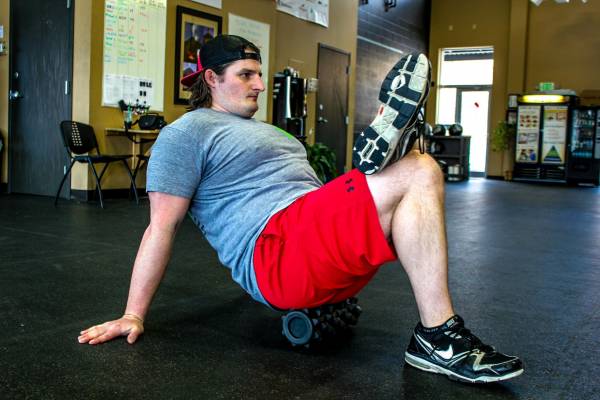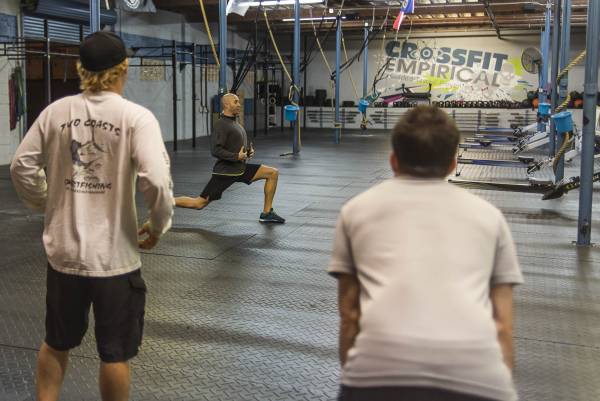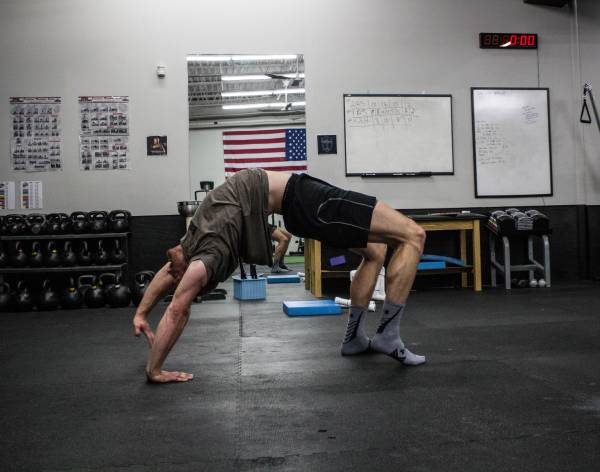If you’ve been in the fitness world for any length of time, you’ve probably heard people talk about posture. While a large number of coaches, athletes, and even licensed medical professionals believe it plays an important role in our daily function, there is no genuine scientific consensus about it.
In fact, a quick Google search will show you that not only is there no consensus, but there is a number of people vehemently opposed to the idea that posture matters. I’m going to look at the logic underlying both viewpoints and try to elucidate on how, when, and why posture matters.
What Is Posture?
In order to understand the arguments, we need to define our terms as people frequently use the same words to say different things. It’s been my experience that the topic of posture is one where this happens quite a bit.
Posture is just a position. “Posture,” as it’s defined in common usage, is some kind of idealized foundational position. I’ve seen a handful of articles talking about teaching or reaching something called “perfect posture.” Perfect posture is just like perfect exercise technique. There are certainly universal guidelines that can be applied to everyone, but the idea that all seven billion of us will have the exact same baseline alignment is silly. There’s no single, universal perfect posture, in the same way there’s no single, universal perfect technique for every exercise. It has to depend on the person.
Some of the confusion about perfect posture arises in a similar way as the confusion about perfect technique. People hear certain cues: “Shoulders down and back,” “Core tight,” “Tilt your pelvis,” etc. and they internalize those cues as ironclad rules. “Knees out” is a useful cue for some squatters. The same way “tuck your elbows” is useful for some people while benching. But that is far removed from saying every single person needs to push their knees out further and tuck their elbows harder. Cues are context based, technique is context based, and posture is also inevitably context based.
“All I’m going to say is this: there’s also quadriplegics out there. I guess I should just give up on using my limbs since they can’t, right?“
Is There an Ideal Posture?
Despite the lack of universal norms, I think we can all agree that for each individual there is a technical, mechanical ideal we’d like to see in specific movements. The same can be said for posture. Posture is basically your body’s neutral zone. It’s the position of alignment where the most skeletal muscles are at a resting, neutral length. This is important for a couple of reasons.
Tightness
Usually when people feel tight, it’s some combination of physical muscle length and neurological input. That neurological input can be the result of a lot of things, but most of the time it’s based on habitual positions and your body’s response to those positions.

If you habitually sit and stand with an anterior pelvic tilt, you’re lengthening your hamstrings, which could make them feel tight. If that wasn’t enough, you may also be triggering a protective mechanism that causes the muscle to stay slightly contracted to prevent any further and potentially damaging lengthening. Habitually adopting a position of neutrality will go a long way toward preventing the neurological inputs that lead to this type of “tightness.”
Alignment Is Leverage
Your body is a complex system of levers. It’s just basic physics that for each lever there are optimal angles and positions for creating ideal leverage. In the human body, most of these positions are related to postural neutrality. I say “most” because there are some positions you can use to increase your leverage that aren’t neutral – but you’re also probably sacrificing structural integrity and tissue health to do so. Risk/reward.
“[T]o my knowledge there are no quality studies that have effectively demonstrated any correlation between posture and pain or dysfunction.”
Joint Position Is Muscle Activation
The overall activation of skeletal muscle is more or less based on three things:
- Physical innervation
- Nervous system control
- Joint position
Different joint positions can significantly affect your ability to maximally contract a particular muscle or group. Ideal activation of numerous muscles occurs from slight variations on neutral posture. So, once again, neutral is the best universal starting point to achieve optimal muscle activation.
Finding Your Neutral Position
Finding your neutral and learning how to use it will help you reduce feelings of tightness thereby improving flexibility and mobility, in addition to giving you optimized leverage and muscle activation. Seems like kind of a no-brainer, right? So then why would anyone say it doesn’t matter? Well, the science just isn’t there yet.

Thousands of clinicians can vouch for the efficacy of postural interventions when used on the right patients, but to my knowledge there are no quality studies that have effectively demonstrated any correlation between posture and pain or dysfunction. While this may seem absurd given the things I’ve said about posture, there is one glaring issue. All of the studies that have been brought to my attention concerning posture look at it in a vacuum. They find people with pain and just look at their posture or they find people with bad posture and ask them about their pain.
What Is Movement
What is movement? If you had to define movement, what would you say? Bonus points if you can do it without using the word “move.” For me, the best definition I’ve come up with is that movement is the aggregation of multiple positions into a functional output. Movement at its heart is just a slideshow of positions.
“Your body is a complex system of levers. It’s just basic physics that for each lever there are optimal angles and positions for creating ideal leverage.“
Posture, then, is just one of those positions. Pain and injury tend to occur during the transitions, going from one position to the next. Injuries also tend to be caused by fatigue or excessive load of some kind. The combination of these facts is that a single position, by itself, doesn’t mean much.
You can have terrible posture and positions, but if you never use them to do anything particularly challenging, then there’s a good chance you’ll never experience any issues. In fact, if you have terrible resting posture, but whenever you go to perform an athletic movement you magically default to ideal alignment and position, then your resting posture doesn’t matter.
Of course, due to the nature of movement as a behavior and the process of habituation, it’s incredibly unlikely that would happen. Our bodies adapt to the way we move. You certainly don’t need good posture to be strong and healthy, but you also don’t need to be strong and healthy. It’s not really about that.

Inevitably when discussing posture someone always feels obligated to point out that some people have severe structural issues, genetic or otherwise, that prevent them from ever obtaining neutral posture. They then use this to make the leap that all attempts at postural training are pointless. All I’m going to say is this: there’s also quadriplegics out there. I guess I should just give up on using my limbs since they can’t, right?
Continuing the Posture Debate
In closing, posture is incredibly important. What we still need clarity on is exactly how and when. Hopefully this article has helped shed some light on the discussion for you. I’m looking forward to see what the literature comes up with in the future.
Check out these related articles:
- How to Unlock Your Athletic Potential Through Good Posture
- How I Banished Chronic Hip Pain Through Posture Alignment Therapy
- Why Slouching Isn’t the Only Bad Posture
- What’s New On Pulse Beat Fit Today?
Photo 1 courtesy of Shutterstock.
Photos 3 courtesy of CrossFit Empirical.
Photos 2 and 4 courtesy of Shannon Khoury.






